Keynotes Announcement: The Second International Bridge Seismic Workshop (II IBSW), Nov. 17-19, 2017
- iabeeorg
- Aug 2, 2017
- 8 min read
The workshop will include several keynote speakers and topics (details below). We hope you are planning on joining us for the keynote presentations and other activities included in the workshop. Please find more information about the workshop here.
Ian G. Buckle - Professor, University of Nevada at Reno
Title:
Improving the Seismic Resilience of Bridges Using Innovative Experimental Technologies
Abstract:
Experimental technologies in earthquake engineering have advanced considerably in the last 20 years. Many of these advances have focused on working at larger scale, so that nonlinear behavior during extreme events is modeled more realistically and closer to real time. These technologies include large shake tables, shake table arrays, real time hybrid simulation, geotechnical centrifuges, laminar soil boxes, and wave flumes and basins. All have been used, or are being used, to improve the seismic resilience of bridges. In this presentation three examples will be covered: stability of an elastomeric isolation system in a curved bridge, connection forces during tsunami inundation of a single span bridge, and development of a large laminar soil box for studying soil-structure-interaction in deep bridge foundations. It is concluded that although large-scale experiments are expensive and time consuming they (1) allow investigation of complex nonlinear phenomena in a transparent and credible manner, (2) enable development and validation of complex simulation tools and computational models, and (3) advance state-of-the-art in unexpected ways. It follows these technologies play a vital role in the advancement of seismic resilience.
Gian Michele Calvi - Professor, IUSS Pavia and Eucentre Foundation
Title:
Experiences and Trends in Seismic Design of Bridges
Abstract:
The lecture will review and discuss some relevant conceptual considerations for seismic design of different kind of bridges, including isolated and cable-stayed bridges. The advantages and disadvantages of different structural solutions will be highlighted, reviewing alternatives for deck sections, tower configurations, in both the longitudinal and transverse direction, deck-to-pier connections, and cable arrangements, amongst other issues. Some simple preliminary sizing procedure will be presented and discussed, with the aim of offering to designers a quick but rational means of identifying reasonable member sizes for cable-stayed bridges that should then be verified through advanced analyses in the detailed design stages of the project.The subject of repair and strengthening existing bridges may be touched, depending on available time. Some real case study applications will be introduced, comparing preliminary and final design member sizes and showing that intelligent preliminary sizing procedures may be a useful tool for design.
Kuo Chun Chang - Professor, National Taiwan University
Title:
A New Hysteretic Model for Seismic Evaluation of RC Bridge Columns Under Near Fault Ground Motions
Abstract:
A new smooth hysteretic model was proposed for ductile, flexural-dominated reinforced concrete bridge columns. Four columns designed per modern seismic codes were tested using monotonically-increasing and variable-amplitude cyclic loading protocols and ground motion loading to develop the model. Based on the experimental observations, hysteretic rules for damage accumulation and path dependence of reloading were constructed. Comparison between analytical and pseudo-dynamic test results using three consecutive ground motions showed that the proposed model can well capture the experimental hysteresis behaviors. Then inelastic displacement spectra associated with corresponding damage state for RC bridge columns were constructed using the proposed model. Nonlinear time history analysis for SDOF systems having different hysteretic behaviors identified from tested columns with various design parameters and subjected to 15 far-field and 15 near-fault pulse-like ground motions was conducted. And failure criteria was made because columns analyzed by the proposed model could fail under one or more than one of the earthquake records especially when subjected to near-fault ground motions. Furthermore, the effects of various design parameters of column and earthquake types on the computed spectra were presented and the well-known inelastic displacement ratio formula in the literatures were evaluated using the computed spectra. Finally, to aid seismic evaluation of RC bridges, formulae for inelastic displacement ratio and corresponding damage state as a function of structural period, strength ratio, and various design parameters were established for far-field and near-fault ground motions, respectively.
Xun Guo - Professor, Institute of Engineering Mechanics, China Earthquake Administration
Title:
Field and Experimental Investigation on Seismic Performance of Long Span Rigid Frame Bridge with Super High Piers
Abstract:
Long span rigid frame bridge with super high piers are quite popular in China western area which is earthquake prone. One of such bridge-Miaoziping bridge experienced the May 12, 2008 Wenchuan earthquake. The causative fault is only 4.0 km away. Field investigation showed that the main piers and deck performed well, but all the bearings which support the beam ends were smashed. Damage pattern and traces showed that the cantilever side spans responded in a way as dragon tail swaying, thus severe pounding occurred between beam ends and restrainers. very large displacement of beam ends led to smash of bearings and restrainers. Phseudo-dynamic test on this scaled bridge model was carried out. The bridge performed very well until PGA reached 1.5g. Only some horizontal cracks surrounding the bottom of the piers could be found after input of El Centro motion with PGA of 1.5g. These cracks were obviously caused by moment, and the piers were still in good state to support vertical loads.
Kazuhiko Kawashima - Professor, Tokyo Institute of Technology
Title:
Seismic Performance of a Polypropylene Fiber-Reinforced Cement Composite Bridge Column Based on E-Defense Shake Table Experiments
Abstract:
E-Defense shake table experiments on a 7.5 m tall, 1.8 m by 1.8 m square bridge column using polypropylene fiber reinforced cement composites (PFRC) at the plastic hinge region and part of the footing is presented. The column was excited using 80% of the original intensity of the near-field ground motion recorded at the JR Takatori Station during the 1995 Kobe, Japan earthquake. Use of PFRC mitigated cover and core concrete damage, local buckling of longitudinal bars and deformation of ties even after six times of repeated excitation. The damage sustained was much less than the damage of regular reinforced concrete columns.
Alessandro Palermo - Professor, Department of Civil and Natural Resources Engineering, University of Canterbury
Title:
Resilient Damage Resistant Bridge Piers: From Theory to Practice
Abstract:
Christchurch and more recent Kaikoura earthquakes has highlighted the difficulties in assessing the actual residual capacity and selecting the fastest and most cost-effective repair philosophy of damaged plastic hinges in conventional reinforced concrete bridges. A design that minimizes/controls post-earthquake reparability, so-called “Low damage design” is seen a future viable solution and is currently widely implemented in New Zealand, especially for buildings. Its aim is to significantly reduce seismically induced damage to structural members, guarantee self-centering capability, i.e. no residual drifts and better control the local damage of the connection through the yielding of dissipative/replaceable devices. Bridges adopting low damage design are a viable alternative to seismic isolation and integrate perfectly with accelerated bridge construction techniques for bridge piers. Although, the enhanced seismic performance is evident respect to conventional systems, the slightly higher initial costs associated with the construction and the risk of a novel design is still a key detrimental factor. The presentation will overview the outcomes of an extensive experimental campaign at University of Canterbury on different types of repairable bridge pier connections and conclude within the overview of the Wigram-Magdala Bridge link in Christchurch, first bridge adopting post-tensioned rocking dissipative piers.
Saiid M. Saiidi - Professor, Civil Engineering Department, University of Nevada at Reno
Title:
Seismic Damage Susceptibility of Bridge Piers with Different High Performance Cementitious Materials in Plastic Hinges
Abstract:
As bridge seismic design has evolved and improved over the past four decades, bridge collapse prevention during earthquakes has been successfully addressed in codes and practice. The emphasis in bridge seismic design has now shifted to post-earthquake serviceability as being as prevalent as collapse prevention. New cementitious materials have emerged in an attempt to eliminate or substantially reduce damage in column plastic hinges. A recent study at the University of Nevada, Reno was focused on assessing the relative performance of two such materials, the engineered cementitious composite (ECC) and ultra high performance concrete (UHPC) by incorporating them in plastic hinges of two different columns of a large-scale bridge pier model that was tested on a shake table under different earthquake intensities. Other objectives of the study were to determine seismic performance of cap beam pocket connections adjacent to these plastic hinges and pocket connections for reinforced concrete hinges for adoption in accelerated bridge construction. Damage progression in different parts of the pier model was assessed in the course of shake table testing. Extensive analytical studies of the model followed, and the analytical results combined with the test data were utilized to develop preliminary design methods. The presentation will provide the highlights of the study.
Guang Wu Tang - Professor, China Merchants Chongqing Communications Technology Research and Design Institute
Title:
Introduction to Guide Specifications for Seismic Design of Highway Bridges of China
Abstract:
The revised version of the specifications for seismic design of highway bridges of China will be issued within the next few months. The scope of application of the new specifications primarily covers the seismic design of concrete girder bridges, concrete arch bridges with single span not larger than 150m. For cable stayed bridges, suspension bridges and other bridges with single span larger than 150m, the basic requirements have been given,but project specific research is still needed. Bridges with steel substructure are not included. Bridges are classified into four importance classes A, B, C, and D based on the main span length and complexity. Two seismic design performance levels were adopted. Under earthquake level 1 (E1), bridge should remain almost elastic and no damage, and be able to open to traffic immediately after earthquake. And elastic seismic design method is used in this design stage, strength of the bridge members should be checked. Under earthquake level 2 (E2), Class A bridge, cable-stayed bridge, suspension bridge and isolated bridge should remain almost elastic and with only minor local damage, and be able to open to traffic immediately after earthquake. Class B and C bridges should not collapse, and be able to open to emergency traffic after temporary strengthening. And elastic-plastic seismic design method is used in this design stage, both displacement and strength should be checked.
Ai Jun Ye - Professor, Tongji Unversity
Title:
Seismic Design of Pile-Supported Bridges in Complex Geotechnical Conditions
Abstract:
Severe damage in pile-supported bridges caused by liquefaction and associated lateral spreading effects have been reported in recent strong earthquakes. Meanwhile, pile foundations constructed in water are usually subjected to scour phenomenon that is reported to be one of the most severe hazards for bridge failure. Seismic design of pile-supported bridges in such geotechnical conditions often faces challenges due to the complex soil-foundation-structure interactions. In this regard, this paper adopts experimental (shake table and quasi-static tests) and numerical investigations to provide preliminary solutions to several key issues on the seismic design of pile-supported bridges in presence of scour and/or liquefaction, from seismic demand characteristic to failure mechanism, and to capacity indices of pile foundations. To this end, three topics are presented in this paper: (1) seismic responses of pile-supported bridges under scour conditions and the corresponding most unfavorable scour depths; (2) novel index for liquefaction hazard and impact of liquefaction on seismic responses and failure mechanism of pile-supported bridges; and (3) global/local capacity indices for seismic design of pile foundations under scour conditions. The results reveal the most unfavorable scour depths for pile-supported bridges. Moreover, scour and/or liquefaction have a strong influence(s) on the seismic responses and failure mechanism of pile-supported bridges. In addition, pile foundations under scour conditions show considerable ductility capacities and exhibit potentials for ductility design. The ongoing outcomes of this study aim to provide a framework for seismic design of pile-supported bridges in complex geotechnical scenarios where scour and/or liquefaction involve.




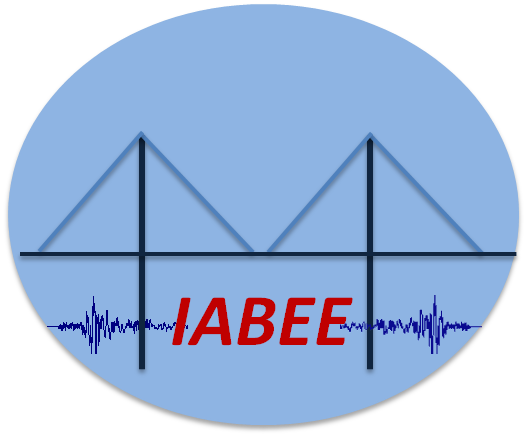

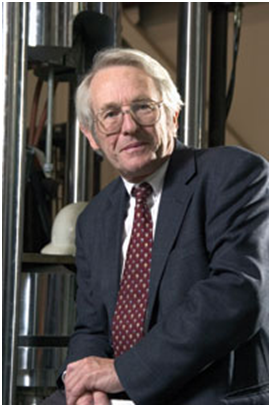





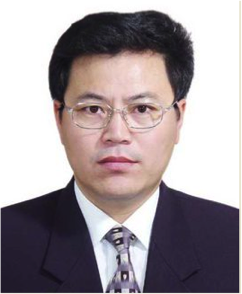

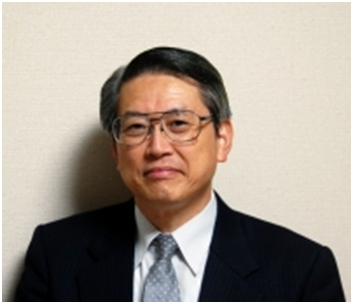



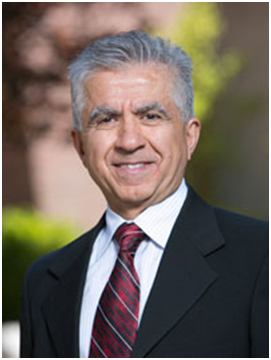

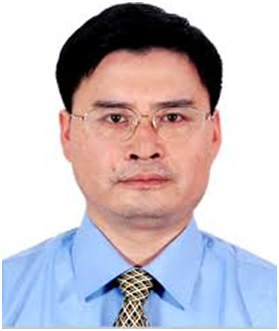


Comments